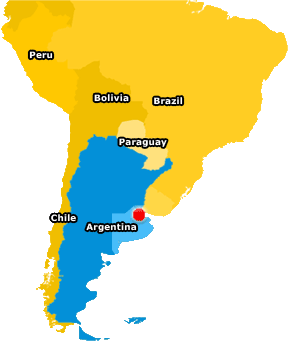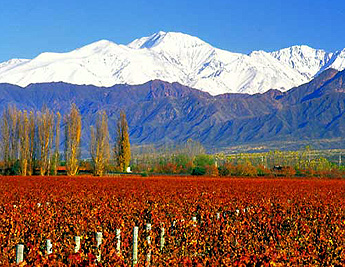Argentina Wines

The Argentina wine industry is the fifth wine producer in the world. Argentine viticulture has its root in the Spanish viticulture, as it was the Spanish settlers who brought vines and grafts to Argentina around 1550. Until the early 1990s, Argentina produced more wine than any other country outside Europe, though the majority of it was considered unexportable because of its low quality.
Argentina Wine History
The Spanish settlers introduced the vines in Argentina during the Spanish colonization of the Americas. To satisfy the growing demand of wine in certain parts of Spain, it was determined that the vines should grow in a location were the lands a climate would not only be acceptable, but would produce high quality wines. Thus, the contracting house of Seville received an order that said that a number of vines had to be aboard every ship sailing to the Indies. The first vine cultivations from the Spanish settlers took place in La Española (currently known as the Dominican Republic) and they expanded to the south with the campaigns of Hernán Cortés and Pizarro.
In 1541, the vines brought from Spain were planted along the Río de la Plata by the Atlantic coast, but the humid subtropical climate didn't help the plants and they ended up dying, so the viticultural activity in the area was abandoned. In 1542, dried seeds from vines planted in Peru were planted in the Salta region; in 1556, cuttings from the Chilean wine region of the Central Valley were taken to San Juan and Mendoza, firmly establishing viticulture in Argentina.
Santiago del Estero had the first recorded commercial vineyard, established in 1557 by Jesuit missionaries and which expanded to Mendoza in the early 1560s and San Juan between 1569 and 1589. The actual irrigation system was initially developed by the missionaries and settlers, which devised a complex system of dams and irrigation that brought water from the snow meltdown of the Andes. The Argentina wine industry started to develop on the western side of the country among the foothills of the Andes, while the population established itself in the east. Transporting the wine from one to the other was done by means of a long wagon journey, so marketing the wines was quite an arduous task.

In 1885, the completion of the Argentine railway that connected Mendoza to Buenos Aires helped to solve this problem. The railway was partly financed by Don Tiburcio Benegas, governor of Mendoza and owner of El Trapiche wine state, who knew that until the railway was constructed, the wine making industry in Argentina wouldn't be able to pick up. With the 19th century came the first wave of immigrants from Europe. The phylloxera plague had devoured most of the vineyards in Europe, so the European wine makers moved to Argentine to continue with their trade, bringing with them their wine making expertise, knowledge and methods.
During the 20th century, the Argentina wine industry was deeply affected by the economic influences. During the 1920s, Argentine was in the top 10 richest countries in the world, with a rich domestic market feeding a very strong wine industry. The Great Depression reduced the already low exportation rates, and a decline in the wine industry began. The presidency of Perón brought a brief respite, but it didn't last long under the military dictatorship of the 60s and 70s. During these hard times, the wine industry was sustained by the consumption of the cheap and bulk produced table wine.

Around 80% to 90% of the Argentina wine produced was being consumed inside Argentina, especially in the capital, Buenos Aires. Exportation wasn't in the mind of most entrepreneurs, although by this time Chile had already established a strong exportation market, specially to the US. In 1991, the borders of Argentina opened up to producers, and in 1992 began the importation of untaxed capital goods, which helped Argentine cellars to modernize their machinery. The main importations for the industry were stainless steels for the fermentation vats, oak barrels from France and the US and new bottling and labeling lies from France.
From this moment on, Argentina wines started to be noticed and appeared on international wine shows like Vinexpo, in Bordeaux. Although the economic and social situation in Argentina has been very hard for several years, the wine industry is experiencing rapid growth and modernization. Argentina has two main wine making regions.
Spanish Wine History
Spanish Wine Regions and DO
Spanish Wine Tours
Top Spanish designations of origin
Best Spanish Wines
Spanish Wine Production
Spanish Wine Types
Spanish Grapes
Spanish Sparkling Wine: Cava
Sherry Wine
Spanish Wine Cocktails
Spanish Wines in the World
Spanish Wine Prizes
Enotourism
Spanish spirits and liquors
Argentina Wines
Chilean Wines
Other sites